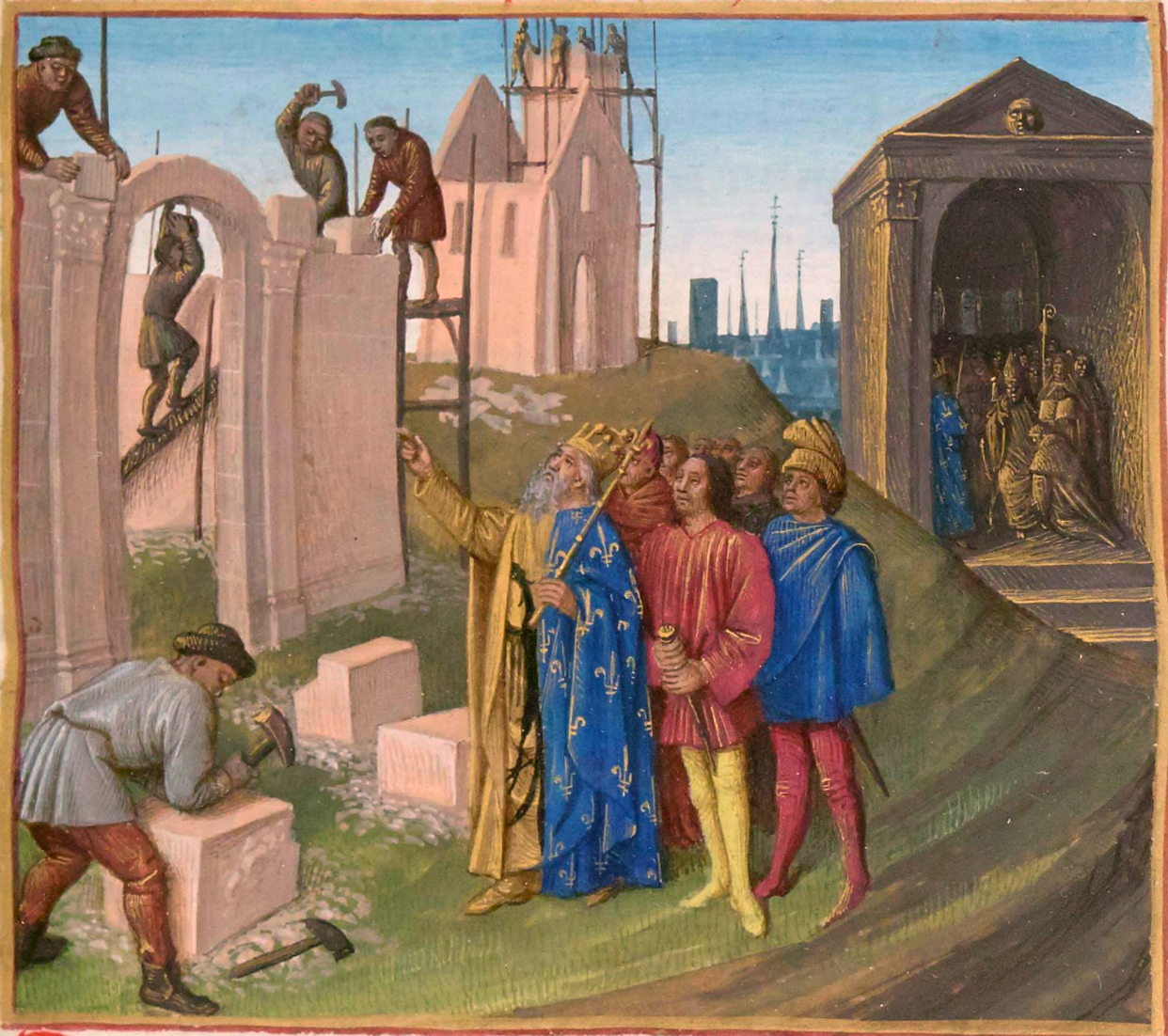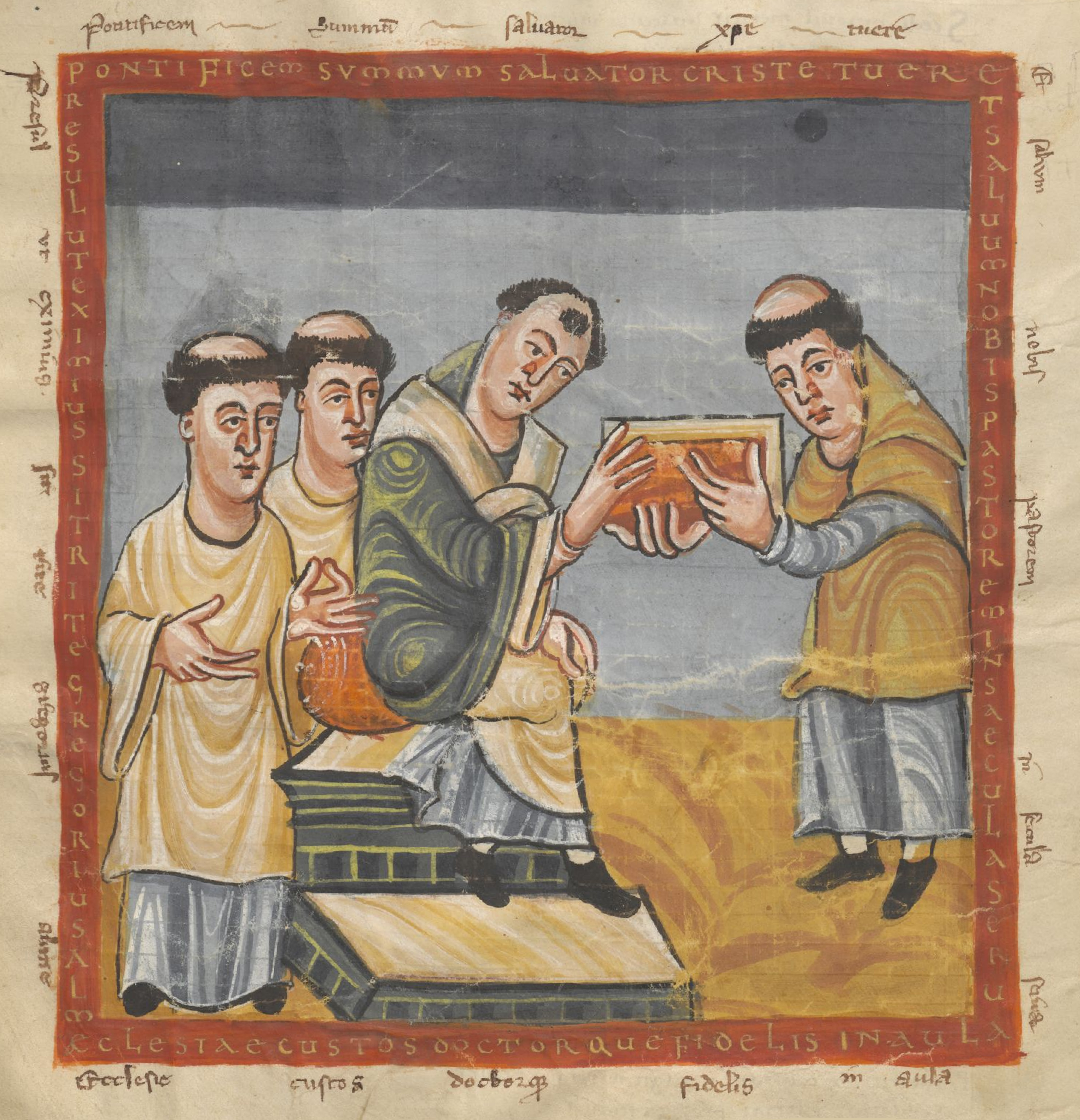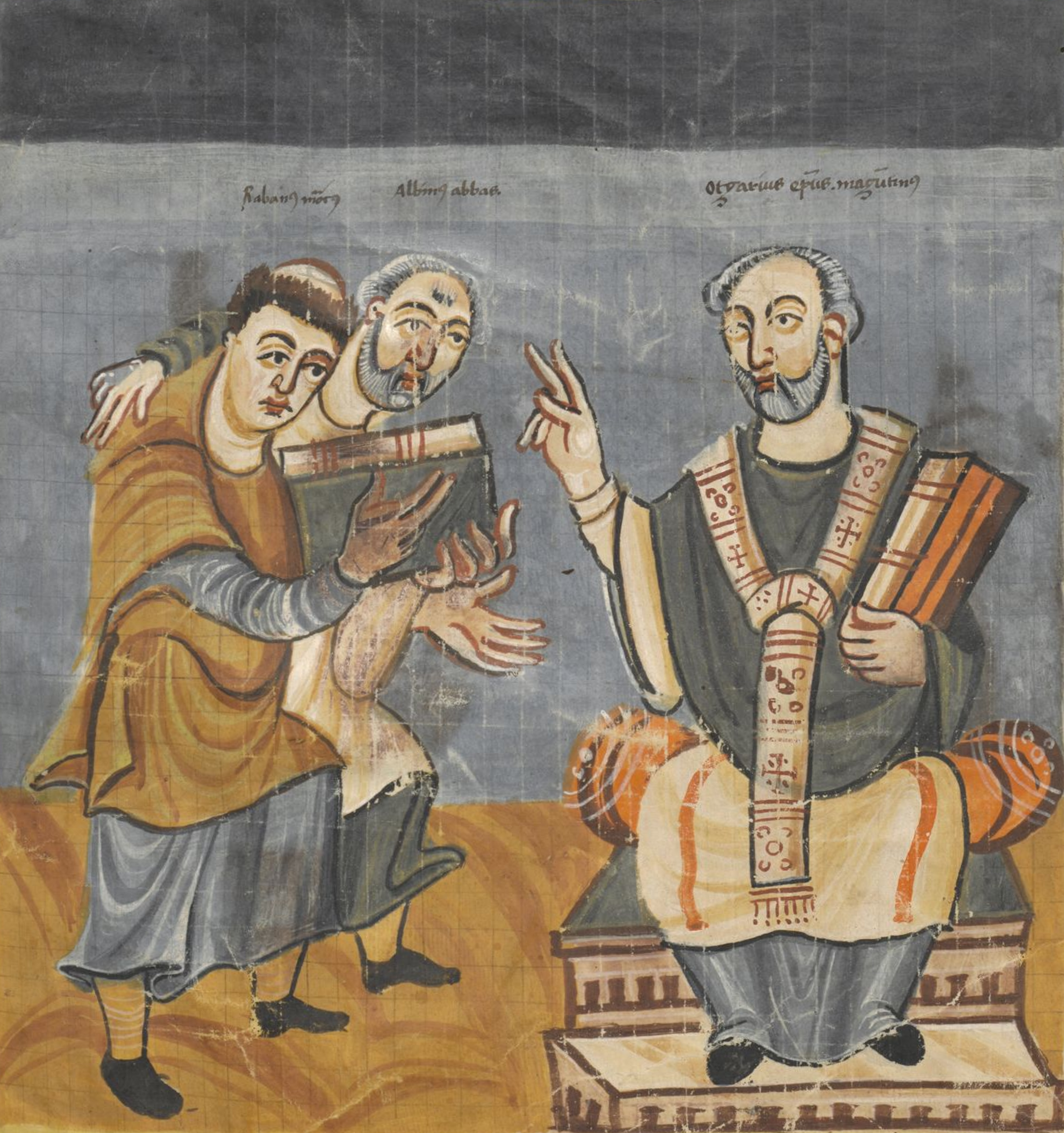|
Aldric
Saint Aldric ( – 7 January 856) was Bishop of Le Mans in the time of Louis the Pious. Life Aldric was born into a noble family, of partly Saxon and partly Bavarian extraction, about the year 800. At the age of twelve he was placed by his father in the court of Charlemagne, in the household of his son Louis the Pious at Aix la Chapelle. Aldric was highly esteemed by both monarchs, but at the age of twenty-one he withdrew to Metz and became a priest. He was given a prebend at St. Stephen's. He was then recalled to the court by Louis, who took him as his chaplain and the guide of his conscience.Campbell, Thomas. "St. Aldric". The Catholic Encyclopedia Vol. 1. New York: Robert Appleton Company, 1907. 12 April 2020 Nine years after his ordination, Aldric was made Bishop of Le Mans. He was co ... [...More Info...] [...Related Items...] OR: [Wikipedia] [Google] [Baidu] |
Bishop Of Le Mans
The Diocese of Le Mans (Latin: ''Dioecesis Cenomanensis''; French: ''Diocèse du Mans'') is a Latin Church diocese of the Catholic Church in France. The diocese is now a suffragan of the Archdiocese of Rennes, Dol, and Saint-Malo, but had previously been suffragan to Bourges, Paris, Sens, and Tours (in ascending order). In 2021, in the Diocese of Tulle there was one priest for every 4,705. Area The Diocese of Le Mans comprises the entire department of Sarthe, created during the French Revolution on 4 March 1790, pursuant to the law of 22 December 1789; the province of Maine was divided into two departments, Sarthe to the east and Mayenne to the west. Prior to the French Revolution it comprised 636 parishes, and was one of the most extensive dioceses of France; at the time of the Concordat of 1801, it lost some parishes in Vendômois and Normandy, and acquired some in Anjou. The Diocese of Le Mans thereafter embraced 665 communes, up to 1855, when the department of Mayenne ... [...More Info...] [...Related Items...] OR: [Wikipedia] [Google] [Baidu] |
Aix La Chapelle
Aachen is the 13th-largest city in North Rhine-Westphalia and the 27th-largest city of Germany, with around 261,000 inhabitants. Aachen is located at the northern foothills of the High Fens and the Eifel Mountains. It sits on the Wurm River, a tributary of the Rur, and together with Mönchengladbach, it is the only larger German city in the drainage basin of the Meuse. It is the westernmost larger city in Germany, lying approximately west of Cologne and Bonn, directly bordering Belgium in the southwest, and the Netherlands in the northwest. The city lies in the Meuse–Rhine Euroregion and is the seat of the district of Aachen ''(Städteregion Aachen)''. The once Celtic settlement was equipped with several in the course of colonization by Roman pioneers settling at the warm Aachen thermal springs around the 1st century. After the withdrawal of the Roman troops, the vicus ''Aquae Granni'' was Frankized around the 5th century. This was followed by a period of sedentism u ... [...More Info...] [...Related Items...] OR: [Wikipedia] [Google] [Baidu] |
Pope Gregory IV
Pope Gregory IV (; died 25 January 844) was the bishop of Rome and ruler of the Papal States from October 827 to his death on 25 January 844. His pontificate was notable for the papacy’s attempts to intervene in the quarrels between Emperor Louis the Pious and his sons. It also saw the breakup of the Carolingian Empire in 843. Rise to papacy The son of a Roman patrician called John, Gregory was apparently an energetic but mild churchman, renowned for his learning. Consecrated a priest during the pontificate of Pope Paschal I, at the time of Pope Valentine’s death in 827, Gregory was the cardinal priest of the Basilica of St Mark in Rome. Like his predecessor, Gregory was nominated by the nobility, and the electors unanimously agreed that he was the most worthy to become the bishop of Rome. They found him at the Basilica of Saints Cosmas and Damian where, despite his protestations, he was taken and installed at the Lateran Palace, after which he was enthroned as pope ... [...More Info...] [...Related Items...] OR: [Wikipedia] [Google] [Baidu] |
856 Deaths
__NOTOC__ Year 856 ( DCCCLVI) was a leap year starting on Wednesday of the Julian calendar. Events By place Byzantine Empire * March 15 – Emperor Michael III overthrows the regency of his mother Theodora. He appoints his uncle Bardas as the ''de facto'' regent and co-ruler of the Byzantine Empire.. Europe * King Charles the Bald cedes the county of Maine to Erispoe, ruler (duke) of Brittany—this in return for an alliance against the Vikings. * King Ordoño I of Asturias is said to have begun the repopulation of the town of León in the northwest of Spain (approximate date). Britain * October 1 – King Æthelwulf of Wessex marries the 12- or 13-year-old Judith, daughter of Charles the Bald, at Verberie (Northern France). She is crowned queen and anointed by Hincmar, archbishop of Reims. The marriage is a diplomatic alliance between Wessex and the West Frankish Kingdom.Paul Hill (2009). ''The Viking Wars of Alfred the Great'', p. 18. . * Winter &nd ... [...More Info...] [...Related Items...] OR: [Wikipedia] [Google] [Baidu] |
Actus Pontificum Cenomannis
The ''Actus pontificum Cenomannis in urbe degentium'' ("Acts of the bishops dwelling in the city of Le Mans") is a series of short biographies of the Bishops of Le Mans, starting with the first legendary bishop Julian, one of the Seventy Disciples. The core text was written in the middle ninth century, probably by a cleric or clerics of the cathedral of Le Mans, though it had several subsequent continuations into the High Middle Ages. Much of the information this core contains, including several charters and diplomas, is partly or wholly fictitious. The ''Actus'' were probably part of an ambitious campaign to extend the bishop's rights over neighbouring monasteries, particularly the Benedictine abbey of Saint-Calais, though the attempt collapsed at the royal council of Verberie in 863. The text is important as evidence for late Carolingian episcopal ideology. See also *Catholic Church in France The Catholic Church in France, Gallican Church, or French Catholic Church, is part ... [...More Info...] [...Related Items...] OR: [Wikipedia] [Google] [Baidu] |
Liborius
Liborius of Le Mans (c. 348–397) was the second Bishop of Le Mans. He is the patron saint of the cathedral and archdiocese of Paderborn in Germany. The year of his birth is unknown; he died in 397, reputedly on 23 July. Le Mans and Paderborn As for other fourth-century saints, little is known of his life. He was a Gaul, influenced by Latin culture. He is said to have been Bishop of Le Mans for 49 years. He built some churches in its neighbourhood, an indication that his missionary activity was limited to the Gaul of his time. He is said to have ordained, in the course of 96 ordinations, 217 priests and 186 deacons. Saint Martin of Tours assisted him when he was dying. He was buried in the Apostle Basilica of Le Mans, beside his predecessor, Julian, the founder of the bishopric. Miracles are said to have occurred at his tomb. In 835 Bishop Aldrich placed some relics of his body into an altar in the cathedral, and in the following year, on the instructions of Emperor Louis the P ... [...More Info...] [...Related Items...] OR: [Wikipedia] [Google] [Baidu] |
Roman Catholicism
The Catholic Church (), also known as the Roman Catholic Church, is the List of Christian denominations by number of members, largest Christian church, with 1.27 to 1.41 billion baptized Catholics Catholic Church by country, worldwide as of 2025. It is among the world's oldest and largest international institutions and has played a prominent role in the history and development of Western civilization.Gerald O'Collins, O'Collins, p. v (preface). The church consists of 24 Catholic particular churches and liturgical rites#Churches, ''sui iuris'' (autonomous) churches, including the Latin Church and 23 Eastern Catholic Churches, which comprise almost 3,500 dioceses and Eparchy, eparchies List of Catholic dioceses (structured view), around the world, each overseen by one or more Bishops in the Catholic Church, bishops. The pope, who is the bishop of Rome, is the Papal supremacy, chief pastor of the church. The core beliefs of Catholicism are found in the Nicene Creed. The ... [...More Info...] [...Related Items...] OR: [Wikipedia] [Google] [Baidu] |
9th-century Writers In Latin
The 9th century was a period from 801 (represented by the Roman numerals DCCCI) through 900 (CM) in accordance with the Julian calendar. The Carolingian Renaissance and the Viking raids occurred within this period. In the Middle East, the House of Wisdom was founded in Abbasid Baghdad, attracting many scholars to the city. The field of algebra was founded by the Muslim polymath al-Khwarizmi. The most famous Islamic scholar Ahmad ibn Hanbal was tortured and imprisoned by Abbasid official Ahmad ibn Abi Du'ad during the reign of Abbasid caliph al-Mu'tasim and caliph al-Wathiq. In Southeast Asia, the height of the Mataram Kingdom happened in this century, while Burma would see the establishment of the major kingdom of Pagan. Tang China started the century with the effective rule under Emperor Xianzong and ended the century with the Huang Chao rebellions. In America, the Maya experienced widespread political collapse in the central Maya region, resulting in internecine warfare ... [...More Info...] [...Related Items...] OR: [Wikipedia] [Google] [Baidu] |
Saints Of West Francia
In Christian belief, a saint is a person who is recognized as having an exceptional degree of holiness, likeness, or closeness to God. However, the use of the term ''saint'' depends on the context and denomination. In Anglican, Oriental Orthodox, and Lutheran doctrine, all of their faithful deceased in Heaven are considered to be saints, but a selected few are considered worthy of greater honor or emulation. Official ecclesiastical recognition, and veneration, is conferred on some denominational saints through the process of canonization in the Catholic Church or glorification in the Eastern Orthodox Church after their approval. In many Protestant denominations, and following from Pauline usage, ''saint'' refers broadly to any holy Christian, without special recognition or selection. While the English word ''saint'' (deriving from the Latin ) originated in Christianity, historians of religion tend to use the appellation "in a more general way to refer to the state of special h ... [...More Info...] [...Related Items...] OR: [Wikipedia] [Google] [Baidu] |
9th-century Christian Saints
The 9th century was a period from 801 (represented by the Roman numerals DCCCI) through 900 (CM) in accordance with the Julian calendar. The Carolingian Renaissance and the Viking raids occurred within this period. In the Middle East, the House of Wisdom was founded in Abbasid Baghdad, attracting many scholars to the city. The field of algebra was founded by the Muslim polymath al-Khwarizmi. The most famous Islamic scholar Ahmad ibn Hanbal was tortured and imprisoned by Abbasid official Ahmad ibn Abi Du'ad during the reign of Abbasid caliph al-Mu'tasim and caliph al-Wathiq. In Southeast Asia, the height of the Mataram Kingdom happened in this century, while Burma would see the establishment of the major kingdom of Pagan. Tang China started the century with the effective rule under Emperor Xianzong and ended the century with the Huang Chao rebellions. In America, the Maya experienced widespread political collapse in the central Maya region, resulting in internecin ... [...More Info...] [...Related Items...] OR: [Wikipedia] [Google] [Baidu] |
9th-century French Bishops
The 9th century was a period from 801 (represented by the Roman numerals DCCCI) through 900 (CM) in accordance with the Julian calendar. The Carolingian Renaissance and the Viking raids occurred within this period. In the Middle East, the House of Wisdom was founded in Abbasid Baghdad, attracting many scholars to the city. The field of algebra was founded by the Muslim polymath al-Khwarizmi. The most famous Islamic scholar Ahmad ibn Hanbal was tortured and imprisoned by Abbasid official Ahmad ibn Abi Du'ad during the reign of Abbasid caliph al-Mu'tasim and caliph al-Wathiq. In Southeast Asia, the height of the Mataram Kingdom happened in this century, while Burma would see the establishment of the major kingdom of Pagan. Tang China started the century with the effective rule under Emperor Xianzong and ended the century with the Huang Chao rebellions. In America, the Maya experienced widespread political collapse in the central Maya region, resulting in internecine warfare, t ... [...More Info...] [...Related Items...] OR: [Wikipedia] [Google] [Baidu] |
Bishops Of Le Mans
A bishop is an ordained member of the clergy who is entrusted with a position of Episcopal polity, authority and oversight in a religious institution. In Christianity, bishops are normally responsible for the governance and administration of dioceses. The role or office of the bishop is called episcopacy or the episcopate. Organisationally, several Christian denominations utilise ecclesiastical structures that call for the position of bishops, while other denominations have dispensed with this office, seeing it as a symbol of power. Bishops have also exercised political authority within their dioceses. Traditionally, bishops claim apostolic succession, a direct historical lineage dating back to the original Twelve Apostles or Saint Paul. The bishops are by doctrine understood as those who possess the full Priest#Christianity, priesthood given by Jesus in Christianity, Jesus Christ, and therefore may ordain other clergy, including other bishops. A person ordained as a deacon, pri ... [...More Info...] [...Related Items...] OR: [Wikipedia] [Google] [Baidu] |






